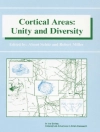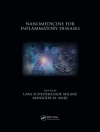In the brain information is coded into sequences of impulses which are unit responses travelling from neurones or nerve cells along nerve fibres. The neural code is equivalent to a Morse code of dots only in a great variety of temporal patterns and with thousands of connections in parallel. Fig. l A is a diagram of Figure 1: Drawing of Four Neurones of the Cerebral Cortex. This shows the excitatory synaptic connections set up by an input fibre from the thalamus labelled (spec. aff. ), which is an enormous nucleus in the brain that provides the principal inputs to the cerebral cortex. This spec. aff. fibre branches profusely to make excitatory synapses on the spiny stellate cell (Sst) and on one pyramidal cell (Pyr). All three pyramidal cells receive on their spines excitatory synapses from Sst, and there is a special excitatory structure, called by Szentagothai a cartridge, formed by the synaptic endings on the apical dendrites of two pyramidal cells. All three pyramidal cells but not the Sst, send their axons out of the cerebral cortex as shown by the lower projecting arrows. The upper inset shows an enlargement of a spine synapse with synaptic vesicles in the presynaptic ending and the spine arising from a dendrite. The lower two insets show diagrammatically normal and hypertrophied spine synapses. (SZENTAGOTHAI, 1978).
John C. Eccles
Neurobiology of Cognitive Learning [PDF ebook]
Neurobiology of Cognitive Learning [PDF ebook]
购买此电子书可免费获赠一本!
语言 英语 ● 格式 PDF ● ISBN 9783322900531 ● 出版者 VS Verlag fur Sozialwissenschaften ● 发布时间 2013 ● 下载 3 时 ● 货币 EUR ● ID 6309335 ● 复制保护 Adobe DRM
需要具备DRM功能的电子书阅读器












